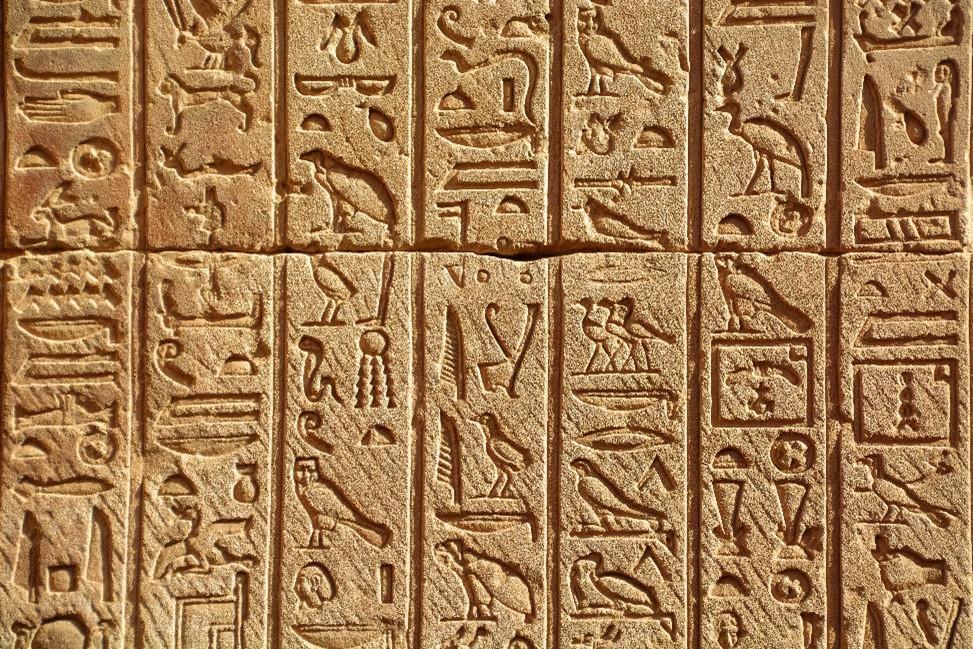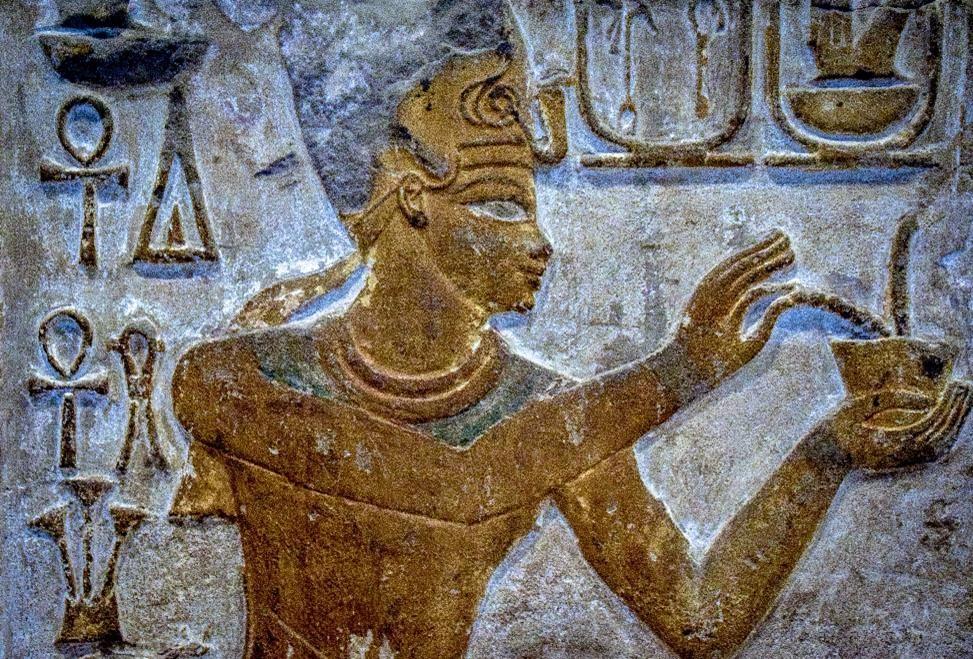Most children get an introduction to the great world of Ancient Egypt through fun math and history lessons on hieratic symbols, hieroglyphs and Egyptian art. For extra help, parents can hire a math tutor online to guide children through these lessons. While we’re all comfortable with famous topics such as pharaohs and divine symbols - many of us have forgotten how math and science have solved problems in many parts of the world.
Did you know, for instance, that the infamous Pythagorean theorem was not actually discovered by Greek mathematician Pythagoras, but was actually already established by the so-called Egyptian triangle? Interested in learning more about this great civilization - Superprof examines everything from ancient numerals to the Rhind Papyrus!

The History of Egyptian Numbers and Maths
This infamous civilization is well known for its stunning monuments, an important role in history and, maybe above all, their incredible impact on mathematics that we use today. How did everyday Egyptians discover such complex numerals and formulas? Easy, they started by trying to solve a problem in their everyday lives!
Think about the Great Pyramids of Giza - it isn’t a surprise that to make such stunning monuments like these this civilization would have to be great engineers. While they also had high skills in medicine, mathematics is where the ancients made discoveries that are still utilized today.
Complex maths and symbols, such as the infamous Hieratic cursive system, didn’t come from anywhere. There were many practical problems that required solving for a civilization of this size. Can you think of a problem that might have troubled all or parts of this ancient land? Here are just some:
- Flooding of the Nile destroying crops and land boundaries
- Large administration responsibilities due to complex systems of taxes
- The need to unify records
- The invention of a system of counting and recording transactions in a big trade system
While one problem, or all of these, is something we are accustomed to not having to deal with every day - keep in mind that this was one of the first instances humans had to answer some of these difficult issues.
If you're struggling with some of the basic math involved in understanding Egyptian mathematics, you should look into the history of ancient Greek mathematics and the best mathematics apps for children!
Let’s take a look at how the Egyptians turned their obstacles into solutions we still use today!
Egyptian Numerals
To understand how this community created systems of counting and performing operations, we should probably first be familiar with our own, modern math system. Would you be able to guess what kind of system we have for counting?
Our math system actually comes from the Babylonians and is called the positional system. Sounds complicated, but it’s actually quite simple - which is why it spread to many parts of the world and why it is still utilized today.
On the other hand, Chinese numerals are based on a decimal positional system with distinct characters for digits and place value, while Egyptian numerals used a non-positional system with separate symbols repeated for units, tens, hundreds, and so on.
While we may not think of them as such, our numbers, referred to as Hindu-Arabic numerals, are really just symbols. We have, in total, 10 of these symbols: 0, 1, 2, 3, 4, 5, 6, 7, 8, 9. In positional systems, each symbol is written depending on their position to each other. For instance, to write the number ten, we have to write it in a specific order: 10 instead of 01.
Egyptians made use of a decimal system like us, meaning they had bases of 10. Hieroglyphic numbers, while they seem complicated, are really just symbols for numbers that are different to the ones we use today. Here’s an example of the kinds of symbols utilized for Egyptian numerals in mathematics.
Start learning from a math tutor today and jump through the grade brackets in the subject.
| Number | Egyptian Symbol |
|---|---|
| 1 | One line: | |
| 10 | An upside-down U |
| 100 | A coiled rope |
| 1 000 | A lotus plant |
| 10 000 | One finger |
| 100 000 | A frog |
One ancient people that did not use a positional system were the Chinese! Their system is a great example of an old, non-positional numeral system. Learn more about ancient Chinese mathematics here!
If math is a bit of a struggle for you then you may benefit from taking a few one to one sessions with a math tutor so allow you to better grasp mathematical concepts.
For additional guidance in your studies, consider booking a tutor math session to help reinforce your understanding.

The Rhind Papyrus
While we know of the mathematics and operations that the ancients utilized, we actually don’t know much about how they found all of these great discoveries. This is because, while we have some great records on what famous hieratic symbols meant or the significance of the Egyptian Eye, there weren’t many records discovered about the parts of mathematics that great Egyptians created.

Part of the problem is of course how old these records are, but parts of great collections of records and mathematical texts were also believed to have been burned during the great fire in the Library of Alexandria.
One exception is what is called the Rhind Papyrus. This document, discovered by Scottish Egyptologist named Henry Rhind in the 1800s, is one of the only mathematical texts we have from ancient Egypt. The Rhind Papyrus has 84-87 calculations that were utilised to help everyday people in their daily lives.
These problems ranged from the complex to the trivial.
One instance of a simple problem was how to divide the number of loaves, n, between 10 people. Problem number 1 solved this equation when n was equal to 1 loaf. Problem 2 was when n = 2 loaves; Problem 3 for n = 6 loaves, etc.
Complex Hieroglyphic Fractions and Formulas
Another thing that was included in the Rhind Papyrus? Fractions. Egyptians were a fan of an operation similar to simplification - where all fractions would be reduced to unit fractions. This means a fraction like 3/5 would be broken down into: 1/2 + 1/10.
The famous document included sections on how to reduce these. Other famous records, such as the Moscow papyrus, contained further information on how Egyptians calculated the volumes of pyramids and circles or even how they used a fractional value for Pi!
All ancient fractions, in fact, were used as unit ones with the exception of 2/3. This means every fraction they used had the numerator of 1. The ancients had different hieroglyphs and hieratic symbols to represent different fractions. See just how much we can learn from the ancient civilizations and their number systems? For instance, parts of Horus’ eye were utilised to represent different unit fractions. Here are some examples:
| Fraction | Egyptian Symbol |
|---|---|
| 1/2 | Right part of eye |
| 1/4 | Pupil of eye |
| 1/8 | Eyebrow |
| 1/16 | Left part of eye |
The Egyptian Triangle
One thing you may not have known about this civilization is that they were actually the inventors of something you may actually be familiar with. Let's play a game! Can you guess what these people invented? Here are some hints:
- It is shaped like a triangle
- You can use this formula to find distances between angles
- Many people actually credit the Greeks for this invention
Have you got a guess? The Egyptians actually approximated what you may know as the Pythagorean theorem! The Pythagorean theorem was invented about 500 BC and little is actually known about whether or not this theorem was well known at the time.
However, in order to build all of the incredible pyramids and structures that the Egyptians did, it is well known that they used what is called the 3:4:5 triangle on a daily and practical basis. In other words, these people were incredibly talented engineers.
The 3:4:5 triangle is a right triangle. The trick to this triangle is that no matter what units you're measuring in - feet, miles, etc. - you should always make the triangle with a ratio of 3 to 4 to 5. Here are the corresponding sides to this ratio. You may already know this if you're familiar with the Pythagorean theorem.
| Side | Triangle Part |
|---|---|
| 3 | Base of the triangle |
| 4 | The height of the triangle |
| 5 | The hypotenuse (longest side) |
The great thing about this "magic" shape is that each side was a whole number. This was great because, as we've seen, there were often a lot of issues with counting and performing calculations with Egyptian numerals.
Interestingly, while the Egyptians struggled with these challenges, Babylonian mathematicians developed a much more advanced base-60 numeral system that allowed them to perform complex calculations with far greater ease. Their system made it simpler to divide and represent fractions accurately, which was particularly useful in fields like astronomy and commerce. The contrast between Egyptian struggles and Babylonian advances highlights how crucial an effective numeral system was — and how innovations like the use of whole numbers in geometric shapes were stepping stones toward more sophisticated mathematics in later civilizations.
The great thing about this triangle is that it is a right triangle. Right triangles are very special in mathematics because they have really great properties. One such property is that each angle other than the 90-degree angle is a complementary angle.

If you have a right triangle, you can always figure out the angles of the other two angles as long as you have 1 angle size and two side lengths of the triangle.
It is well known that Egyptians actually used ropes to measure the angles of triangles. They did so by creating 12 knots in a rope. Do you know where this is going? This rope with knots was used to create a right triangle by laying it out. Each knot corresponded to each side - so you would have the following.
| Symbol | Triangle Part |
|---|---|
| 3 knots | Base of the triangle |
| 4 knots | The height of the triangle |
| 5 knots | The hypotenuse (longest side) |















